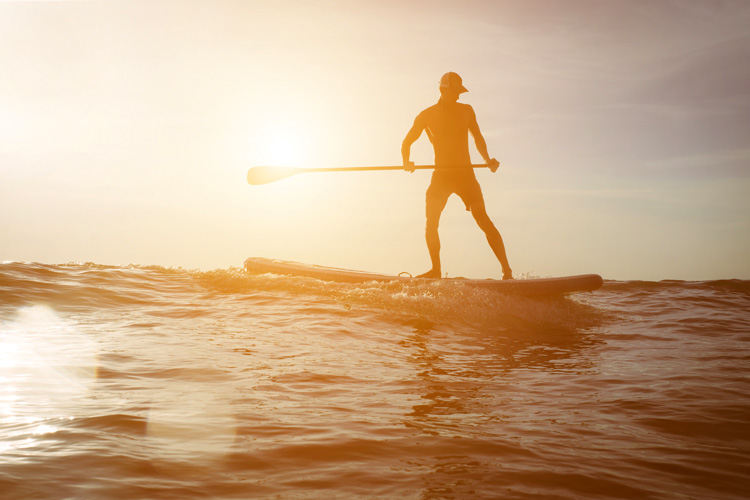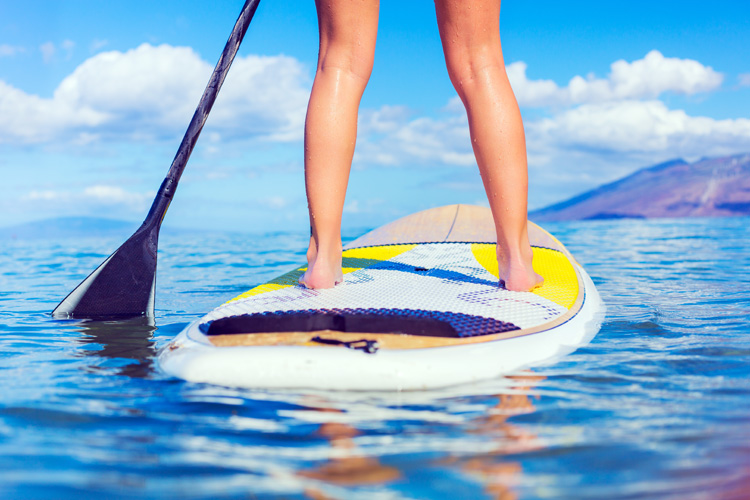Learn how to make a stand-up paddleboard navigate a straight line across the water and perform abrupt turns whenever you think it's necessary.
The SUP paddling technique is an essential tool for all disciplines. Whether you're SUPing for waves, racing, or simply cruising, you'll need to get it right.
First-timers in stand-up paddleboarding struggle to find balance on a stand-up paddleboard (SUP) while simultaneously paddling the board.
The good news is that there are a few tricks to do it correctly and effortlessly.
Every couple of strokes, you have to switch sides to zig-zag the SUP across the water. Let your abdominal muscles do the paddling instead of putting all the pressure on your arms.
Remember that every time you switch the paddle from one side to the other, it will always slow you down a bit.
So, the more efficiently you paddle, the less energy you'll spend and the more time you'll stay in the water.
You'll notice that SUP paddle blades are slightly bent for more efficient strokes. Make sure the C-curve is facing forward each time you get the paddle into the water.

SUP Paddling 101
Here are a few tips on paddling your SUP on flat water. Get your board moving in a straight line and optimize speed with fewer yet better strokes:
- Adjust your SUP paddle length: Extend your arm above your head and bend it slightly - that's the right size for your paddle;
- Keep the blade angle slightly turned towards the rail and yourself: This technique will allow you to paddle indefinitely on one side without having to switch sides;
- Start each stroke by digging the paddle into the water away from the board and then pulling the blade through the water towards the SUP;
- Keep the eyes on the horizon: Don't get distracted by the paddle and the stroke movements;
- Hold the paddle upright and perpendicular to the water surface: Avoid holding the paddle diagonally, as it will be less effective and more strenuous;
- Always keep one hand on the SUP paddle handle and the other one on the SUP paddle shaft: There's no other way to do it correctly;
- At the end of each stroke, keep the paddle as close to your board as possible to drive it forward instead of sideways;
- To make a quick 90-degree turn, get the paddle low to the water, angle the blade away from you, and push it out to the side;
10. Keep a comfortable upright body posture: don't bend your knees too much, and try to keep your back straight and at a 45-degree angle to the surface of the water;
Whenever you need to switch the paddling side to recover your breath, remember to reverse the hand position.
Get the most out of each forward stroke by practicing paddling in calm, glassy waters.
Never paddle too deep, bend your arms too much, lift water at the end of your stroke, paddle with the blade's angle the wrong way, or hold the shaft with both hands.
Need help to choose your first stand-up paddleboard?
